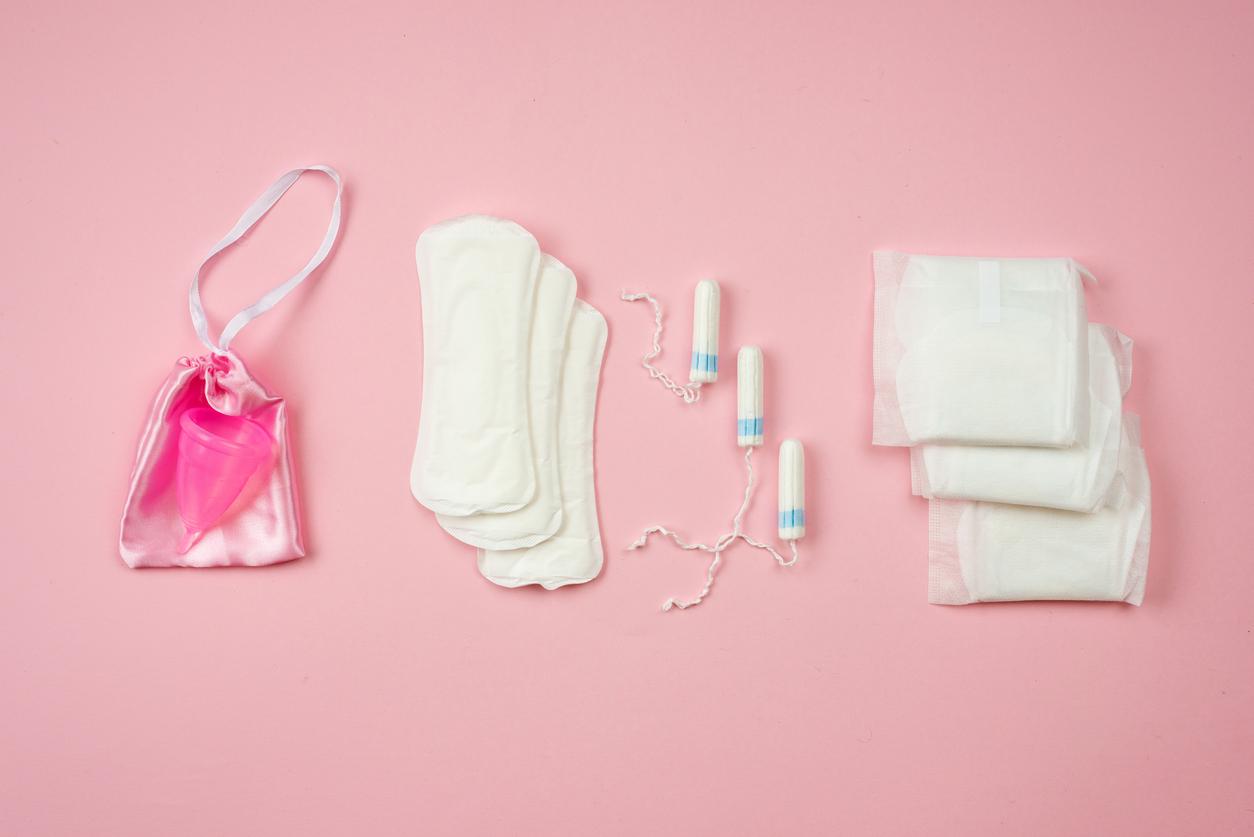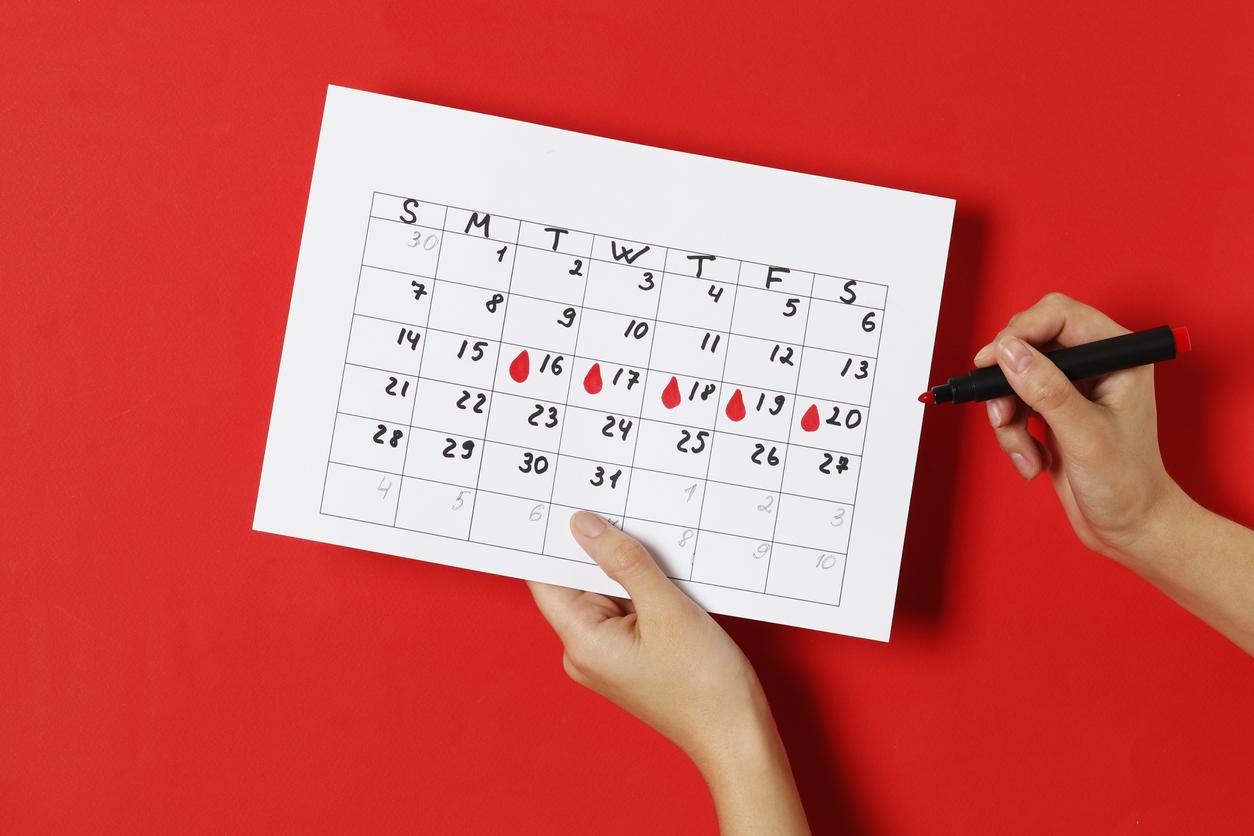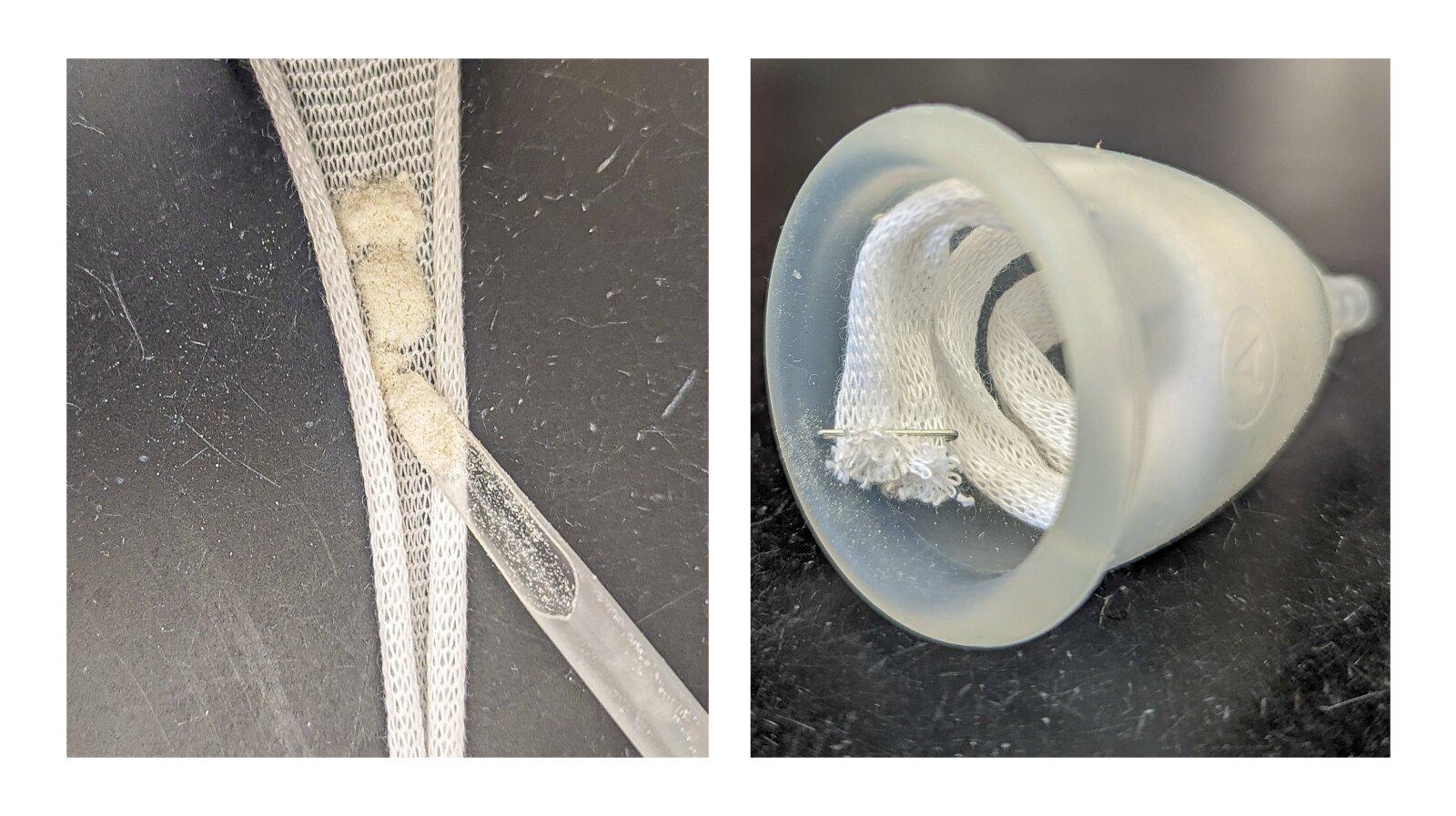Menstrual discs – variant of the cup – would be the most effective protection in case of heavy periods because they have a better absorption capacity.

- Researchers have compared the effectiveness of 21 different sanitary protections.
- According to their findings, menstrual discs are the most effective.
- Their study could make it possible to better identify heavy periods, which sometimes mask the presence of a pathology.
26% of the world’s population have their periods and for one in three people, they are abundant. However, little scientific data exists on how to manage a very large flow. For the first time, researchers have carried out a comparative study to identify the most effective hygienic protection. In BMJ Sexual & Reproductive Health, they explain that menstrual discs offer the best protection during heavy periods.
Periods: a study carried out with blood
The University of Oregon team compared 21 different period products: tampons, pads, menstrual cups or cups, menstrual discs, silicone pads that fit inside the vagina, and period panties. For each of these products, different levels of absorption were tested.
Unlike studies performed by manufacturers to measure the effectiveness of their products, scientists did not use water or saline to estimate absorption capacity, but blood. Specifically, they resorted to outdated stocks of packed red blood cells, which could no longer be used for healing. This liquid corresponds to blood from which platelets and plasma have been removed. The resulting texture is closer to menstrual blood, compared to water or saline solution.
What is the most effective hygienic protection?
The test results showed that on average the menstrual discs offered the best absorption, with an average of 61ml and up to 80ml for the Ziggy brand. Abundant periods are precisely defined by a quantity of blood lost greater than 80 ml per day, according to Lyon Civil Hospices.
HAS Conversely, period panties had the lowest absorbency, with less than 2 ml, regardless of model. Tampons, pads and cups menstrual fluids could contain quantities between 20 and 50 ml.
Hygienic protections: the absorption announced by the manufacturers is overestimated
The researchers noticed that there was a discrepancy between the absorbency reported by the manufacturer and the reality. “We also found that the product capacity labeling was inconsistent with our results – the majority of products indicated they had a higher capacity than our tests found.they develop. We suspect this is due to product testing with non-blood fluids, such as water or saline.”
However, they recognize that the women’s feelings could still be different from their results, because even if they used red blood cells, more like menstrual blood than water, it probably remains “below” reality. “Reasons of comfort and convenience may prompt women to switch products before saturation, which may overestimate abundant blood flow.”they add.
Menstrual cycle: it is necessary to better identify heavy periods
If these results are likely to help women find more suitable sanitary protection, the scientists want to go further. “I would much rather people with heavy periods contact their doctor to find out what can be done to reduce bleeding, than trying to find a more suitable product.”explains Bethany Samuelson Bannow, one of the authors of this study.
The work carried out on the real absorption capacities of these different products could help health professionals to “better quantify menstrual blood loss, offer diagnostic tests and accurately treat heavy menstrual bleeding”. They can reveal the presence of a more serious health problem such as bleeding disorders, hormonal imbalance or fibroids, lesions of the uterus.

















